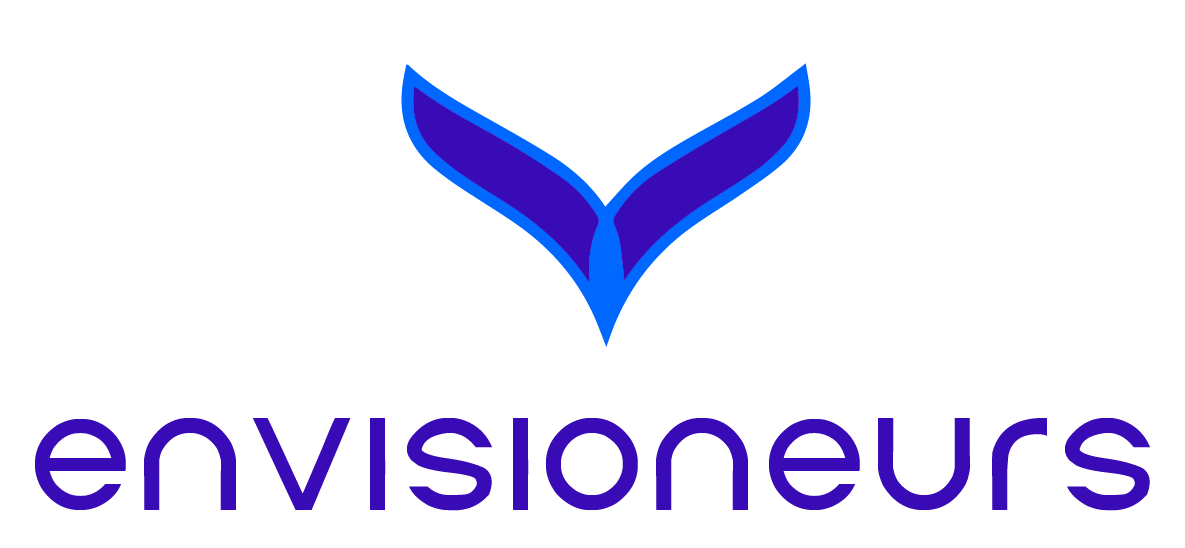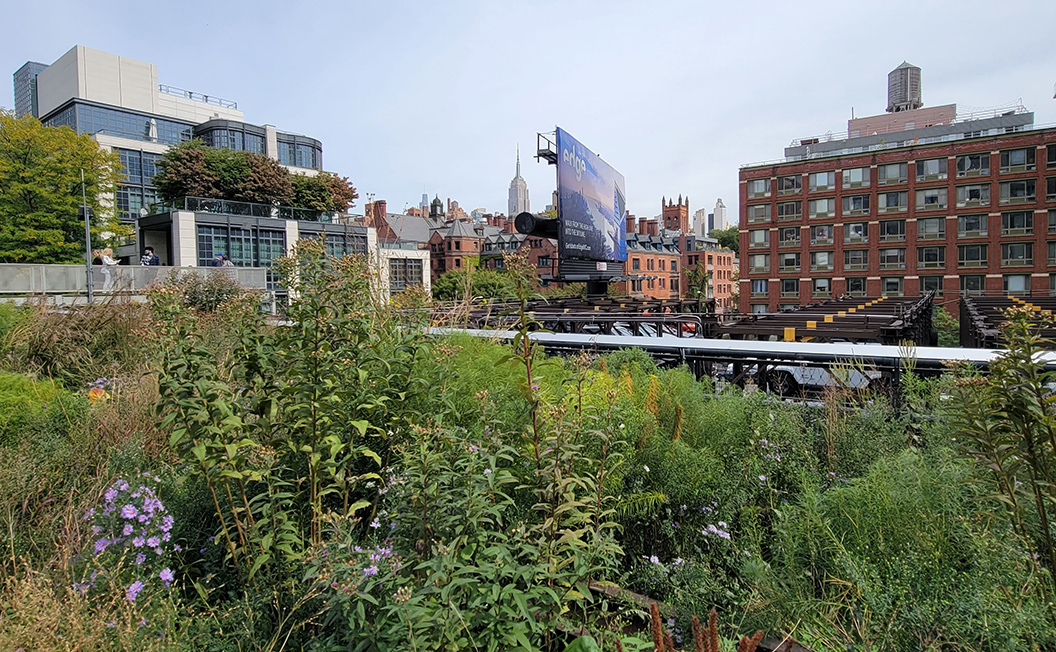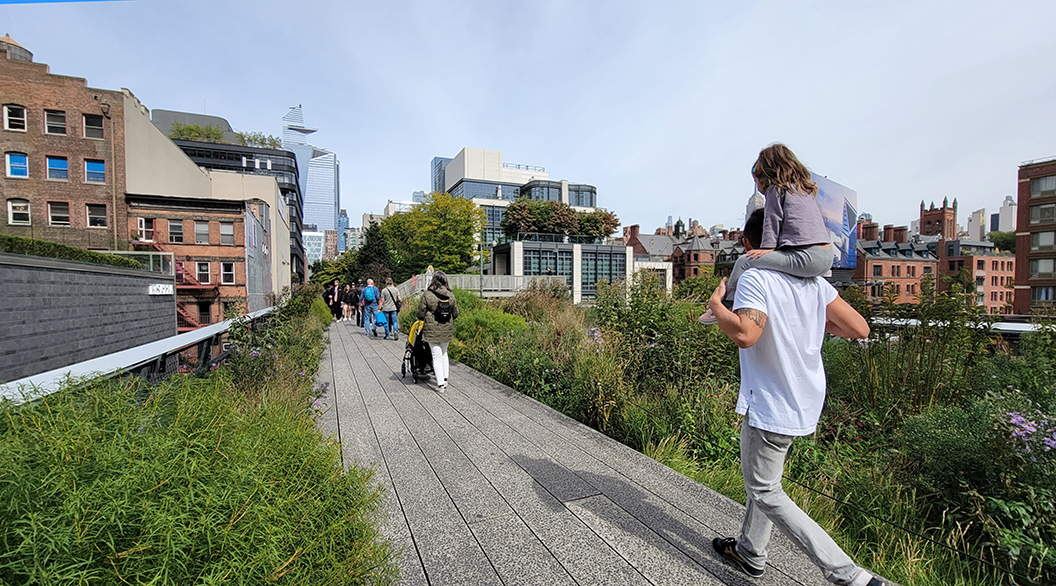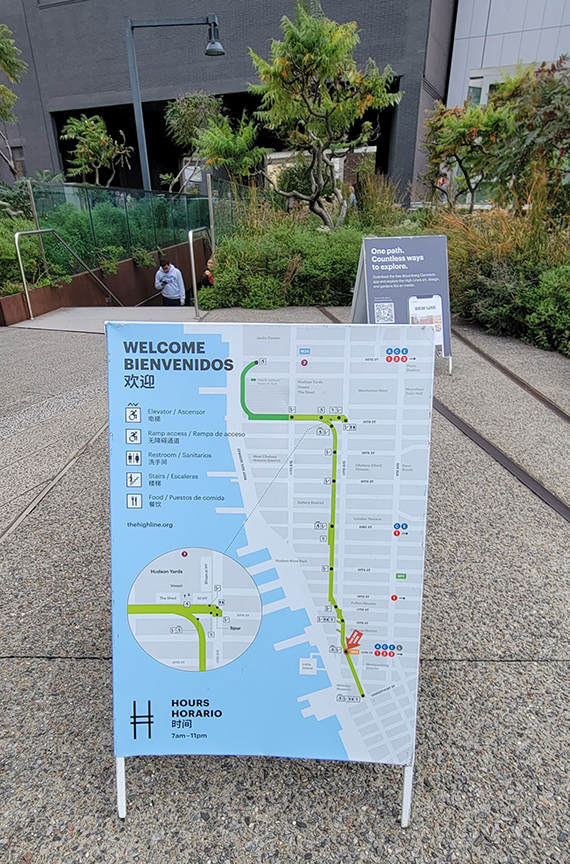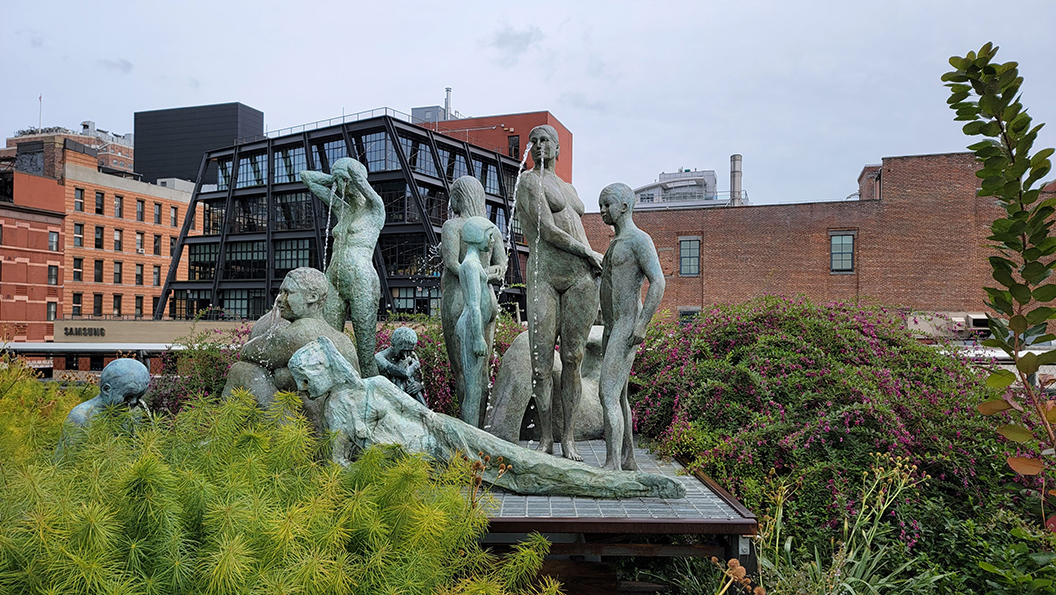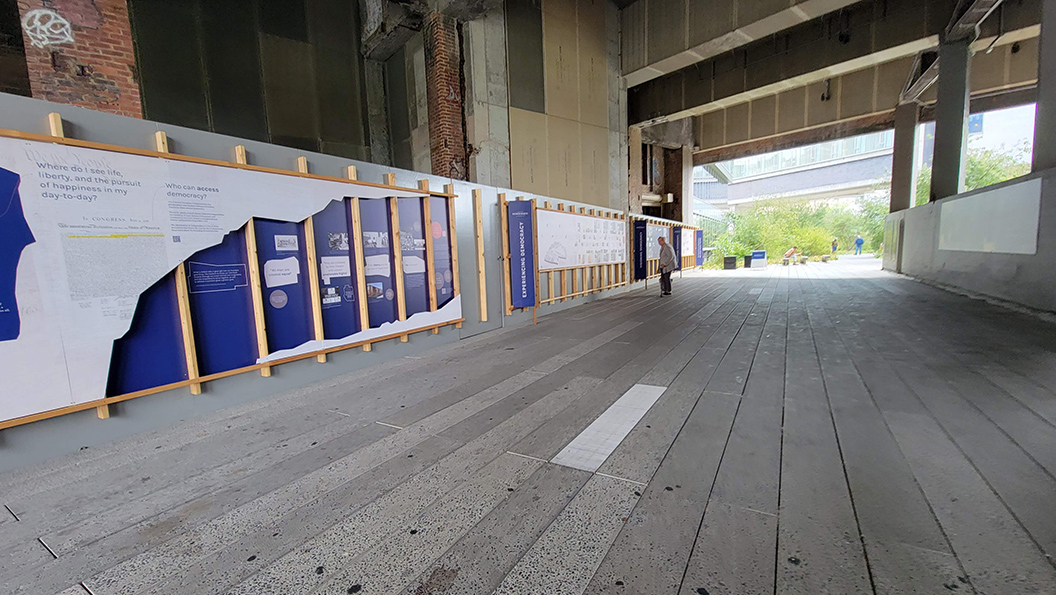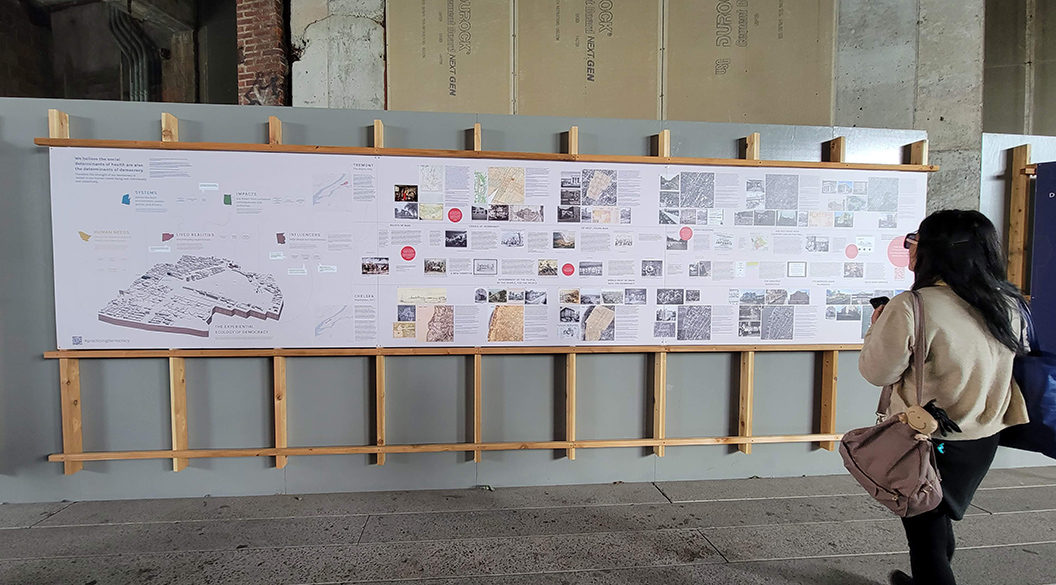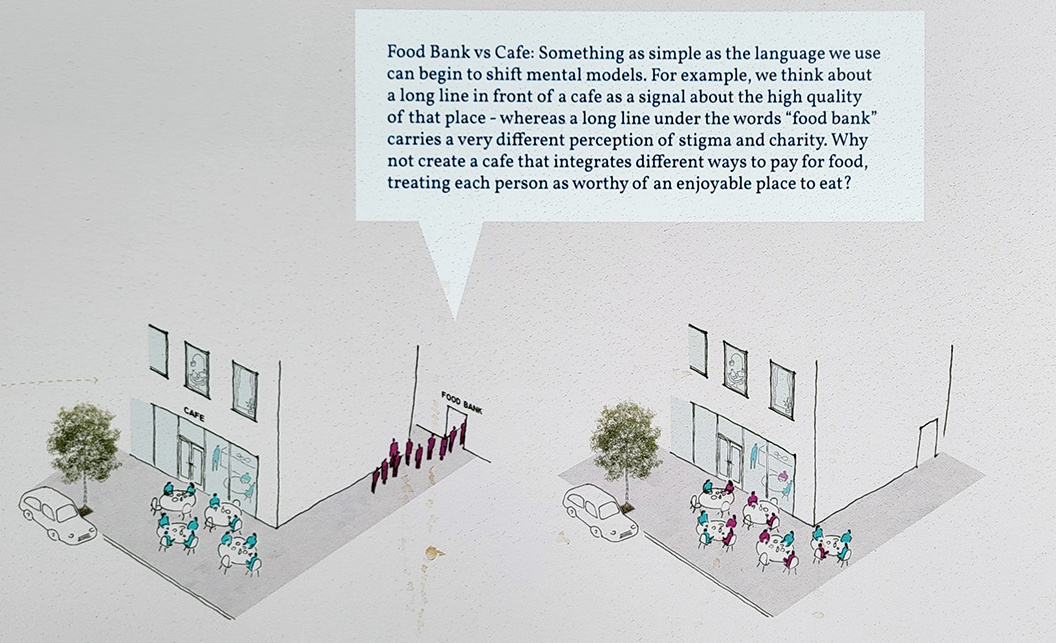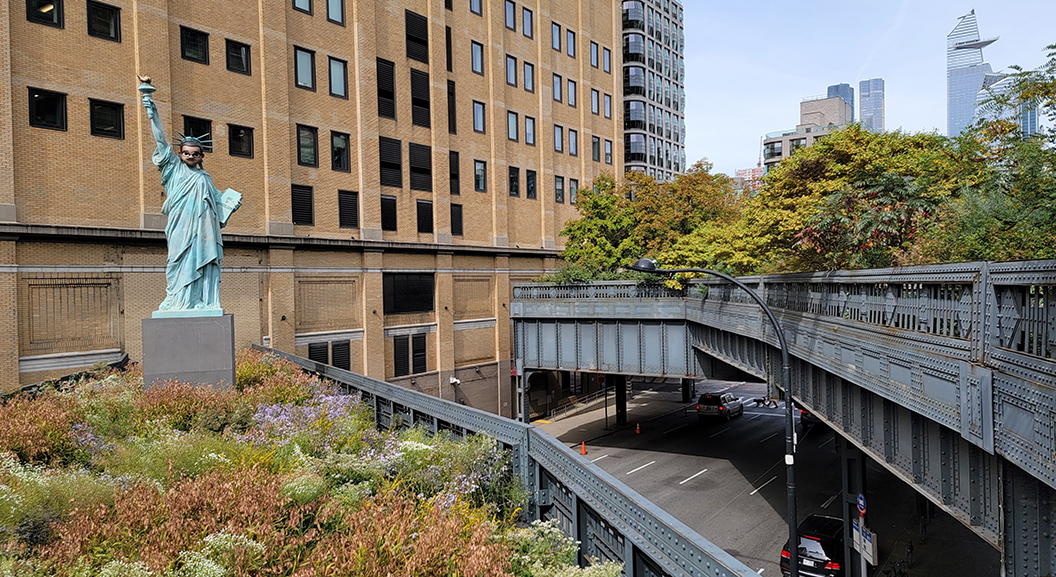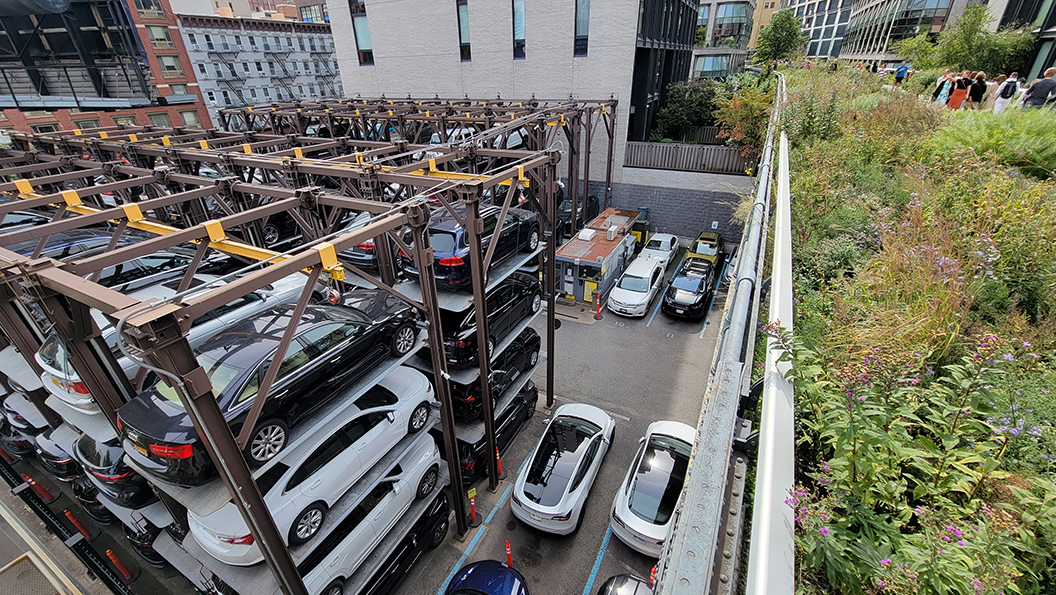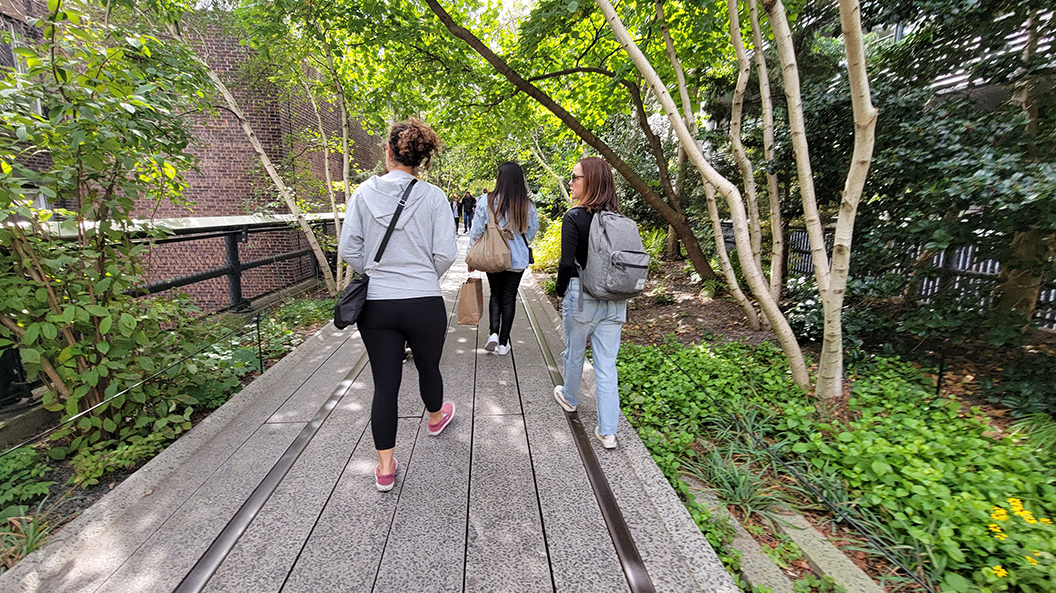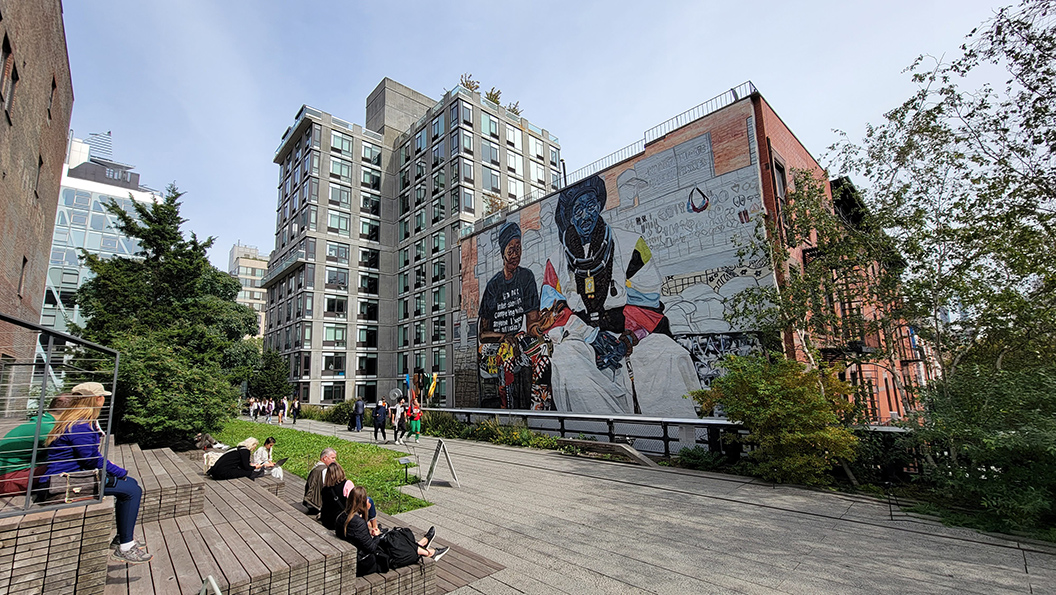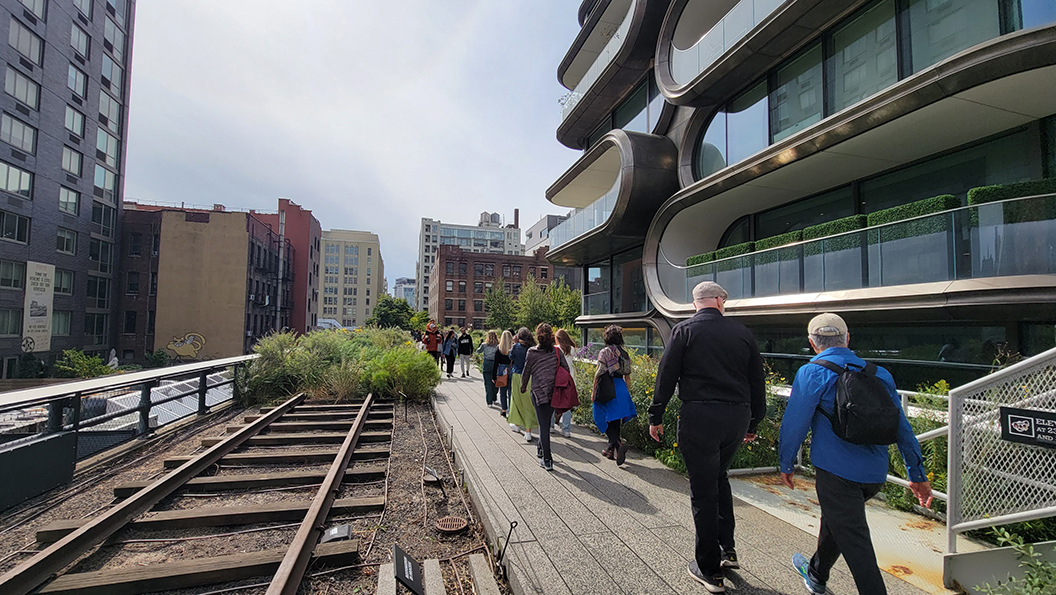Imagine strolling through grasslands above the bustle of Manhattan. This experience is possible! Thanks to the creation of the elevated High Line, you can stroll from Chelsea Market northward to Hudson Yards without dodging cars or waiting for a single stoplight to turn green. You can visit with friends on a bench, read a book under a tree, admire colors in a mural, or puzzle over the meaning of a sculpture. If you’re an artist, you might get to play music or exhibit your works along the trail. The High Line stands twenty-some feet over the streets of New York.

The High Line passes over the streets and provides a clear view of the city’s skyscrapers.
Click on the picture above to see more images of the High Line.
This popular walkway replaces train tracks that had stood in Manhattan since 1934, but that had fallen into disrepair by the early 1980s. Two residents, Joshua David and Robert Hammond, envisioned a way to save the rusting eyesore from demolition. They founded Friends of the High Line as a non-profit conservancy to advocate for the tracks’ preservation and reuse as a public amenity. As the organization’s web site notes, “Their young organization then staged an ‘ideas competition’ to envision the possibilities.” Soon, 720 ideas rolled in from 36 countries. Could the tracks be converted into a garden? Roller coaster? Extended bowling alley? Mile-long lap pool? Miniature golf course? A jury panel selected the most captivating and feasible ideas to convert into an exciting and achievable vision for the future. The winning concept was a vision for a walkway graced by greenery, artwork, and views of the city.
The Mayor and City Council then took action. They re-zoned the old rail line into public park space. From 2006 to 2009, a landscape architecture firm, design studio, and planting designer turned the vision into the first stretch of the High Line. Several additions followed. Today the trail spans 1.5 miles with over 500 plant and tree species.
In 2022, the High Line unveiled an intriguing exhibition that applies the open-minded, visual, and interactive spirit of Design Thinking. “The Practice of Democracy” is a canvas along the trail that runs perhaps thirty yards. This set of illustrations asks pedestrians to ponder whose voices should be included in civic discussions – and how – to ensure that democratic institutions will truly represent the wishes of a community.
Created as a collaboration between the Designing for Democracy nonprofit research and design team, and the CARNEVALE.co/op creative agency, “The Practice of Democracy” considers ways that learning spaces, workplaces, wellbeing, wealth, and other factors influence decisions. The canvas displays a blend of printed questions, sketches, and icons to convey concepts and stimulate conversations. The non-linear format encourages spontaneous responses and lets readers make their own connections and associations between the ideas.
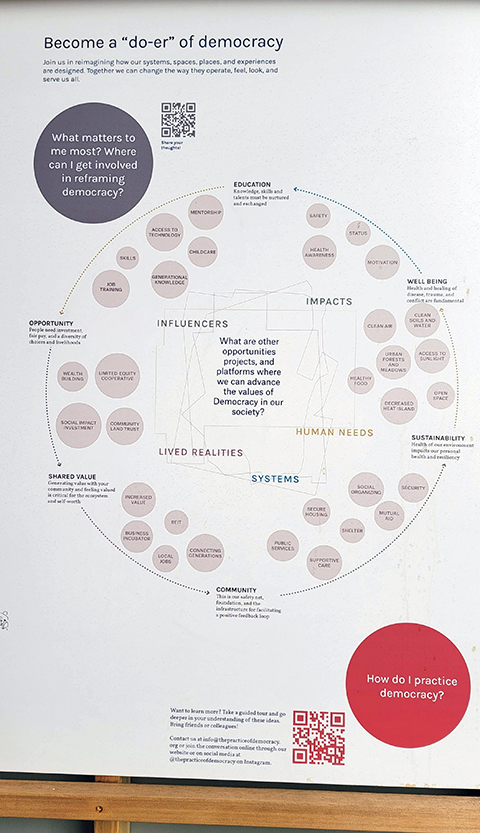
Diagram asks viewers to think of projects and platforms that could advance the values of democracy.
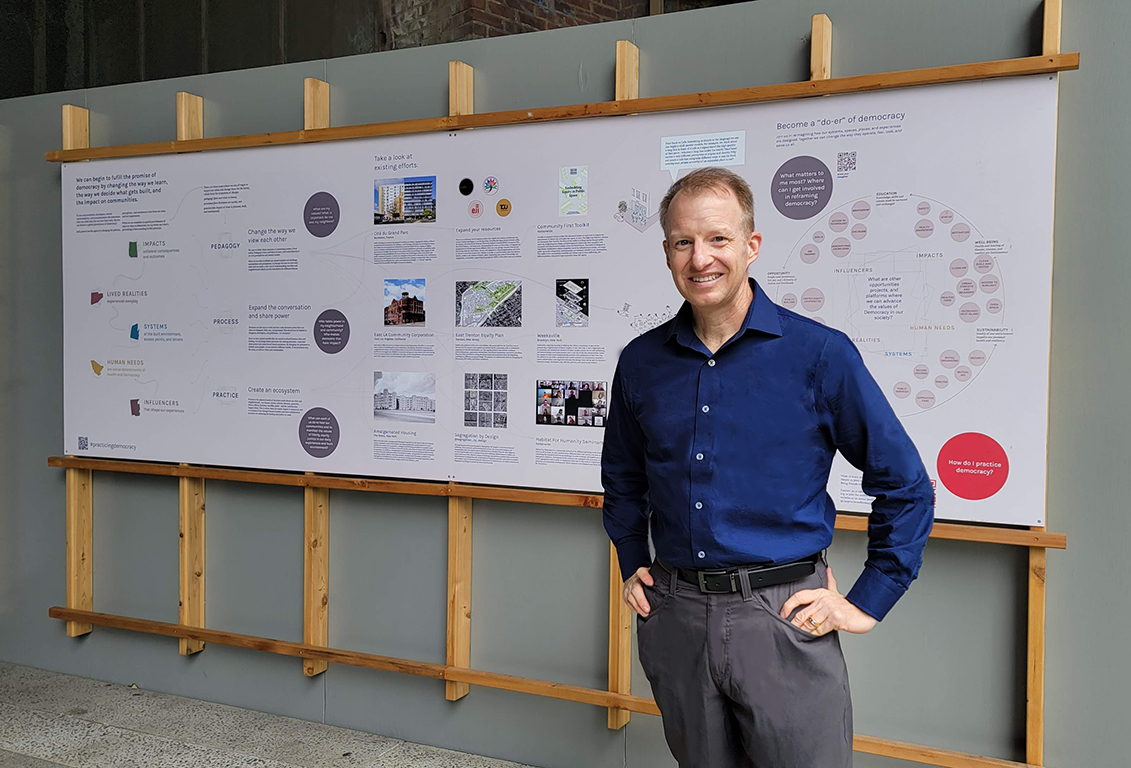
This is one “Practice of Democracy” visual board that teaches concepts and encourages civic conversations.
There are several features of an effective Initiative Design in this example. In fact, if you want to create something exciting for your community, you might draw inspiration from the combination of the physical space along the High Line plus the interactive format of “The Practice of Democracy.” During a visit to the High Line, our Envisioneurs team identified these strengths:
Efficient re-purposing of space:
- Instead of building completely from scratch, the High Line’s creators re-used items that could be preserved or scavenged.
- Instead of upsetting the physical order already present on the streets of Manhattan, the creators focused their design on the space above those streets.
Community engagement and expression:
- The vision emerged through a process of co-creation. The “ideas competition” gave everyday residents a chance to influence the future of the dilapidated old rail tracks. The interactive and public process brought transparency, visibility, and credibility to this venture in community engagement.
- The path is a public gathering space that offers broad plazas, quiet alcoves, and captivating sprinkles of artwork. Thanks to these design elements, the space serves as much more than just a means of connecting two points in a city.
- The inclusion of artwork opens the door to multiple viewpoints. People may display items that convey fresh and intriguing interpretations about history and current events.
Visible and accessible solution:
- The trail is visible. Passersby can see it from below, residents and office workers can look down on it from above, and the pedestrians on the trail can see the path ahead and behind.
- The trail is open to the public, so anyone can appreciate and use it. Contrast this use of space to the many lakes and reservoirs around the world where access is limited to a few owners of property along a shore. The High Line is a vibrant asset enjoyed by the whole community.
Celebration of nature:
- The trail features hundreds of natural grasses and trees. This greenery raises peoples’ spirits, cleans the air, and symbolizes vitality.
- Sunlight and fresh air encourage people to go outdoors and exercise. The trail is open to the air above – instead of enclosed under roofs or tunnels – so it is refreshing, even if once in a while it is rainy or snowy!
Inspirational presence:
- Views of the glittering skyline encourage visitors to admire bold architecture and imagine positive possibilities for the future of the city.
- The lasting presence of the High Line conveys the message that ripe ideas can grow into thriving realities. The trail may inspire the creation for uplifting initiatives in cities and towns around the world.
Flexibility:
- Many spaces along the trail can be moved, re-built, or re-purposed to display different items over time. In other words, the High Line is an iterative space. By adjusting and offering updated content, this space stays relevant and exciting for people who return to the trail year after year.
- Expansion is possible. The trail may grow in a modular manner, block by block, as community desires, willpower, and resources permit. There is no forced end point for the vision.
Sustainable resources:
- Maintenance and upgrades along the High Line are possible thanks to the support of multiple grant funders plus individual donors.
- Volunteer engagement enables trail upkeep to occur throughout the year and gives local residents an ongoing sense of pride in the trail.
If you want to design and build an initiative in your community, you might weave the above list into your checklist for success. Perhaps there is an abandoned rail, a forgotten sidewalk, a dusty field, or another space that you could transform into something wonderful!
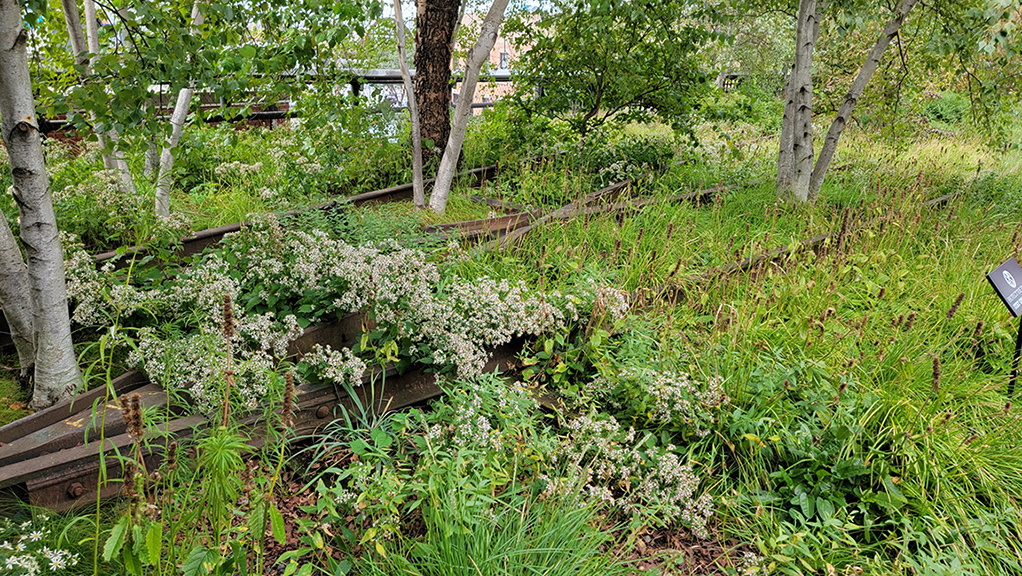
Native plants grow over the old train tracks, providing a glimpse of nature in Manhattan.
